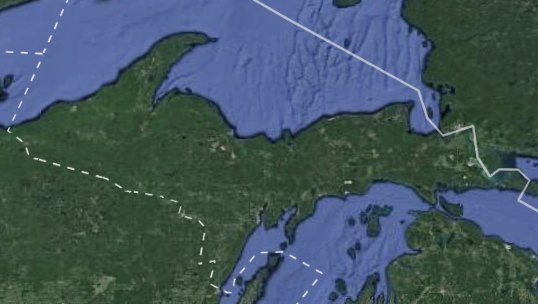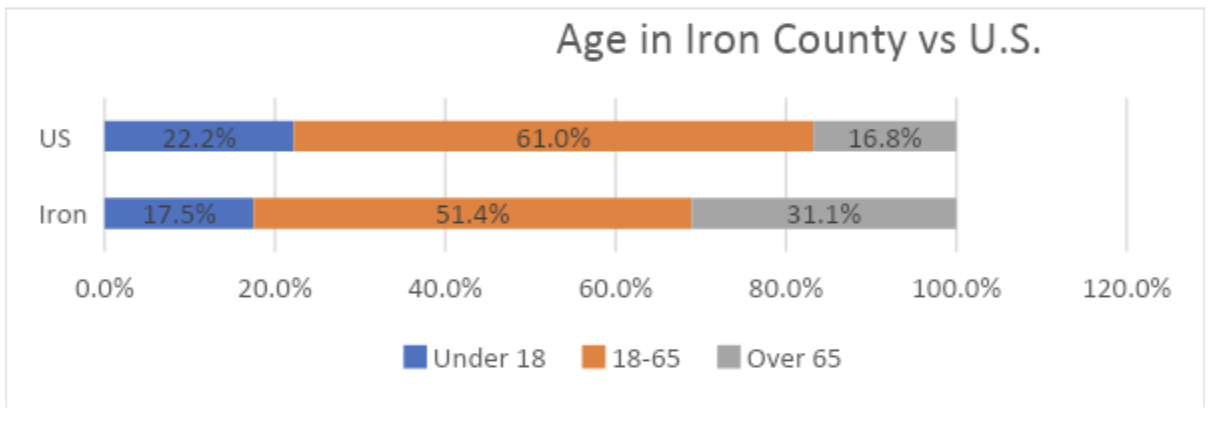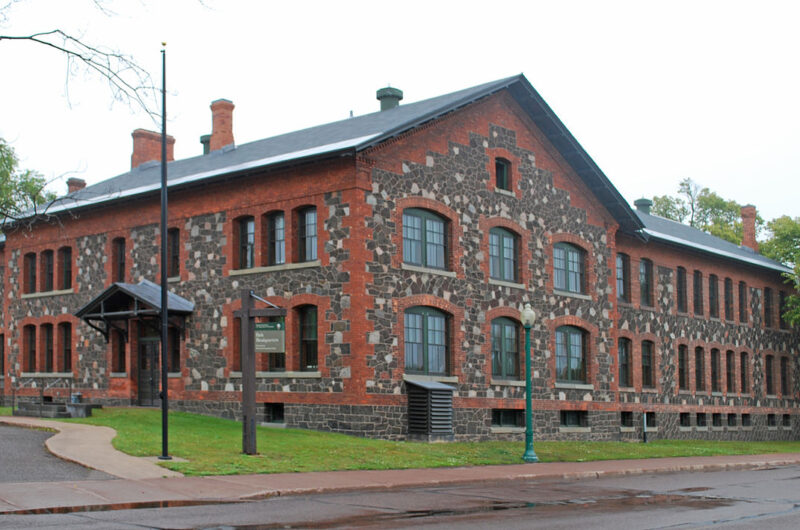
Assessing Socioeconomic Trends and Disparities in Michigan’s Upper Peninsula: A County-by-County Analysis
THE WHY?
In an attempt to get a complete and rounded view of the situation in the Upper Peninsula, we looked at a wide array of measures. In terms of accessible understandable data points, we found these to be some of the most important in telling the story.
Age Structure:
The distribution of age groups in an area often has a substantial effect on the function of their economy. Having a younger population or a more eager workforce will drive the economy whereas an aging population may pose certain challenges.
College Completion, High School Completion, and Youth Test Scores:
A more educated community will lead to a more diverse and better performing economy.
Food Environment:
Access to certain food options changes the way that people spend a large portion of their income. This is also important for understanding more general health outcomes.
Mental Health Services:
Living in lower income households puts people at a higher risk of facing mental health problems, among adults and children. Unfortunately, the same people often have the worst access to the services they need.
Unemployment and Labor Force Participation:
These numbers are both important for gauging the health of the local labor market and the people available to meet labor demand.
Poverty Rate:
This is perhaps the most significant bit of data if you are looking for one simple takeaway. However, it is important to note that the census bases this number around national income requirements, and a lot of areas in the Upper Peninsula are cheaper to live in than most of the country.
General UP Trends
The Upper Peninsula is quite different from the rest of Michigan and other surrounding areas. While it is important to make comparisons to other areas, it is also important to recognize that the variation in statistics can be impacted by differing lifestyles. For example, the UP has a much older population that the rest of the state and the country. This alone could have great impacts on things like college completion, the percentage of people active in the labor force, and internet access.
There are also things that, while they may be a result of a lower density population or older population, are still weighing heavily on these communities. The Upper Peninsula has a much higher number of hospitals, rural health clinics, and federally-qualified health centers based on population, but much lower based on area. In the UP there is one rural health clinic for over 500 square miles, double that of the lower peninsula. It is harder for people to access healthcare in many areas of the UP because of this. The extra cost of transportation or time away from work weighs much heavier on low-income people and may even encourage them to avoid medical help.
There is a similar trend in food access. In a handful of counties, 10-15% of the population is low income and lives far away from a grocery store, or in a food desert. This leaves them with the option of paying higher prices to access healthy foods, or eating less healthy options like fast food. However, with the population being so spread out it’s hard to fix a problem like this. There are no common locations to build more hospitals or grocery stores, or folks to work in them.
ALGER

The Upper Peninsula has a much older population than the rest of the United States. In the US, about 17% of the population is over the age of 65. In Alger county that number is above 26% (Census). This age distribution often leads to a very low percentage of the population being in the labor force. In this case below, 40% of the population in Alger county is in the labor force (people over the age of 16 that are employed or actively searching for employment), whereas the statewide and national numbers are in the range of 60% to 65% (Census). This could contribute to the underwhelming performance of the economy and unemployment rate of 8%, the highest in the UP (Milmi). The county also has the lowest internet access with less that 75% of homes having a broadband internet subscription (census).
Alger county has some of the worst food access in the Upper Peninsula, with 14% of the population being low income and having poor access to consistent healthy food options. The county is pretty successful when it comes to education. There is an average amount of high school graduates for a county in the Upper Peninsula. They have above-average rates of proficiency in reading and math among young students, for the Upper Peninsula and the state of Michigan (Bridge). Yet we don’t see many people pursuing further education, only 36% of people age 25-44 had completed some form of post-secondary education (County Health). The county also has the lowest access to mental health services, with over 1,400 persons per mental healthcare provider (County health). That number is double the average and 5 times larger than counties that contain larger towns.
BARAGA

Baraga County is on the higher side of the Upper Peninsula when it comes to poverty and unemployment. Just shy of 16% of the population lives below the poverty line, and unemployment is nearly 8% (Census). The county is also on the low end of education, with less than 15% of people over the age of 25 having a 4-year degree. That is the lowest number in the UP and is about 10% below average (Census). However, for a small county with lower levels of education, Baraga has some of the best food access in the region. On the food environment index, they rank just below larger counties like Marquette and Houghton, and they perform even better, having consistent access to healthy food for low-income people. Only 5% of the population is low-income and has poor access to healthy foods; the lowest in the UP is 4% (Bridge).
CHIPPEWA

Chippewa County has one of the largest populations in the Upper Peninsula at over 36,000. Being home to Lake Superior State University, the county has a relatively low college completion rate, with about 22% of people over the age of 25 having a bachelor’s degree or higher (Census). They also top the UP in households with broadband internet subscriptions, and have some of the best access to mental health services in the upper peninsula, with 260 people per mental healthcare provider (County health). This makes the nearly 18% poverty rate slightly surprising at first glance. However, single parent households make up nearly 40% of all households with children (Fred), which is extremely high compared to the rest of the upper peninsula. Having only one potential earner can put a family at a serious disadvantage that can often lead to living below the poverty line.
Chippewa County also has an underwhelming food environment considering the size of the population. Obviously, all counties in the Upper Peninsula contain rural areas. These areas contribute to most of the poor food environment. Yet, other counties with similar populations that contain a larger town or two have a higher food environment score. Eight percent of Chippewa counties population is low income and has poor access to consistent healthy food options.
DELTA

Delta county is another large county for the Upper Peninsula, with a population just shy of 37,000. The area is home to Bay College, a two-year community college based in Escanaba. While an Associate’s degree from Bay College does not count towards this group, nearly 20% of Delta County’s over-25 population has at least a 4-year college degree. And over 70% of people age 25-44 have completed some form of post-secondary education (County Health). This includes technical school, vocational school, junior college, and four-year colleges as well. The county is in the middle of the pack for standardized test scores and graduation rates (Bridge), as well as unemployment rates. However, they do hold one of the lower poverty rates, at 11.8% percent, nearly 2% under the U.P. average (Census).
Delta county has a high food environment index score of 7.3 which is not surprising considering the size and education of the population. Yet, 8% of the population is low income and has poor access to healthy foods. This number is very high considering less than 12% of the population is living below the poverty line.
DICKINSON

Of Dickinson County’s nearly 26,000 residents, 11.4% are living below the poverty line (Census). That is one of the lower numbers in this group, underneath the Michigan and U.S. average. Yet, 11 percent of the population is low income and has poor access to healthy food options (County health). The county also has the second lowest unemployment rate in the UP, falling below 5%, and relatively high labor force participation (Census). This number is still low when compared to the rest of the state and country but that is not surprising due to the higher proportion of retirement age people living in the upper peninsula. Dickinson county also has some of the best access to physical and mental healthcare. Having only 280 people per mental health care provider, and 1,150 people per primary care physician (County health). Both of those numbers are the 3rd lowest in the upper peninsula.
GOGEBIC

Gogebic county has good high school completion and is above average in the percentage of students proficient in math (focused on 5th graders), and just below average in reading (Bridge). Yet the county has a below-average amount of college graduates. Even considering 2-year degrees from the local college and other post secondary education, the county is still below average. Gogebic county is tied with Marquette county for the second lowest unemployment rate in the upper peninsula at 5.4%. They have a relatively low poverty rate of 12.5%, falling slightly under the Michigan rate, 13.1%, and the Upper Peninsula rate, 13.5% (Census). Gogebic county has year-round tourist attractions, which can help expand the market for low-skilled jobs, thus lowering unemployment. While tourism may create more jobs, it can often be harmful for the working class which could explain why we don’t see its beneficial impact on employment reflected on the overall poverty rate. The high poverty rate could also be due to the fact that single parent house holds make up nearly half of all households with children.
HOUGHTON

Houghton County, being home to Michigan Tech University, has the second-highest college completion rate in the UP only behind Marquette County, matching the U.S. average at 33.6% (Census). The county also has very similar age distribution to the national numbers, meaning less over-65 people and more under-18 compared to the rest of the UP. This likely is contributing to their higher labor force participation rate, and overall to a stronger economy. They have a low unemployment rate and low single parent households which make sense considering the education levels yet the poverty rate is still high at just over 14%.
The county has excellent food access with a food environment index score of 7.7, second only to Marquette County. They are tied with Marquette for having the lowest percentage of people that are low income and have poor healthy food access.
IRON

Iron County has the highest levels of proficiency in reading and math among elementary students (Bridge). The area also has above average high school graduation rates. However, they have the lowest percentage of college completion of all the counties we looked at 18.9%. Ten-percent less than the statewide and national average (Census). While this number is surprising considering the apparent success of younger students in the county, it doesn’t stand out so much when considering the single parent numbers. Nearly 46% of children in Iron County live in single-parent households, the second-highest number in the Upper Peninsula. This could be for two reasons. The first being that college-educated persons are more likely to get married. The second being that children from single-parent households are less likely to pursue a college degree. Or it could be completely coincidental.

It is also important to note that Iron County has a very unique age distribution. In the U.S. about 17% of the population is over the age of 65, whereas in Iron County that number is over 30% (Census). A much smaller number of people over 65 have college degrees compared to younger generations. It is possible that this older community is skewing the data to show lower college completion. Iron County also has the lowest percentage of homes with broadband internet access, something that often goes hand in hand with education.
KEWEENAW

Keweenaw County is an outlier in nearly every single category. First of all, it is the smallest county having a population of right around 2,000 where there are less than 4 people per square mile. They also have a striking age distribution with 36% of the population being over the age of 65, well over double the national number. Other counties with an older population have lower education levels, likely because over the last few decades the value of higher education seems to have gone up significantly. Yet, Keweenaw county has the highest level of college education in the UP, even beating Marquette and Houghton counties. Somehow with this level of education and a very low poverty rate of 10.7% they have a below-average number of homes with internet access, a combination that is quite unusual.
LUCE

Luce County was the worst in this group for educational statistics. Less than 20% of 5th graders were proficient in both reading and math (Bridge). It is also the only county that had a high school graduation rate of under 90%. These numbers are shockingly low in relation to other Michigan counties. According to the Michigan league for public policy, Luce county ranks 81st out of 82 counties in the state for child wellbeing (MLPP). Considering these education statistics, it is no surprise that the county faces an extremely high poverty rate of nearly 19% and a fairly high rate of unemployment at over 7% (Census). Luce County also has a higher percentage of veterans than any other county in the up, which already has a high percentage compared to the rest of the United States.
Considering the poverty and education of the area, Luce County has excellent food access. Only 4% of their population is low income and has limited access to healthy food options (County Health). This matches larger counties such as Marquette and Houghton.
MACKINAC

Mackinac County scored the lowest in the entire state on the food environment index, a score that is calculated considering access to healthy foods and food insecurity. They also have the second-highest percentage of people who are low income and do not live close to grocery stores (County Health). Living in a food desert is correlated with higher levels of obesity and premature death. This also means higher health care costs which weigh much heavier on low income people.
The county has average or slightly below average numbers for high school completion, standardized test scores, and homes with internet subscriptions. Yet, they come second highest in the upper peninsula in college completion. 24% of people over the age of 25 in Mackinac county have 4-year degrees (Census). Still low considering the national average, but a pretty big step up from most other counties besides Marquette and Houghton.
MARQUETTE

Marquette County is the largest in the Upper Peninsula. Home to Northern Michigan University, the area excels on the education front. They have some of the best test scores among elementary age students, first in reading proficiency and not far behind in math (Bridge). They also have a high school completion rate of nearly 96%, higher than the UP, Michigan, and U.S. averages. Not surprisingly they have the highest college completion rate in the upper peninsula at 34% (Fred). An unemployment rate of 5.4% may not seem excellent considering the education of the population, yet it remains below the average for the upper peninsula. While they show good academic achievement and are home to the strongest economy in the Upper Peninsula, Marquette County is undercutting no averages with a poverty rate of 13.3%. The county does however still lead the UP in access to healthy food (County Health). Only 4% of Marquette County’s population is low income and also lives far away from a grocery store where they can access healthy foods. As one might expect they also have the highest mental health service access in the UP with less than 250 people per mental health care provider.
MENOMINEE

Menominee county has the lowest poverty rate and unemployment rate in the UP at 10.6% and 4.5% respectively. Yet, 14% of their population is low-income and has poor access to healthy food options, which can contribute to overall worse health outcomes. They also have a very low number of primary care physicians and mental health care providers compared to the size of the population. Less than 18% of people over 25 have a four-year degree, but 57% of people between 25-44 have some amount of post-secondary education.
ONTONAGON

Ontonagon County is one of the smallest in the Upper Peninsula, with a population just under 6,000. A population that has been shrinking consistently and declined by nearly half since the 1970s (Census), likely because of the decline of copper mining in the UP. Nearly 40% of the population is above the age of 65, over 1.5 times the average of the upper peninsula. The county has very low college education and labor force participation, 15% and 41%, which is not surprising considering the age distribution (Fred). Ontonagon county has the highest number of people per primary care physician and mental healthcare provider (Bridge), with nearly double the number of patients per primary care physician, and triple the number of patients per mental health care provider. This strikingly high number may be caused by the location of clinics near the borders of counties, yet it likely still means that the population of Ontonagon county has a harder time accessing the care they need. The county also has a very poor food index (6.7/10) and 12% of the population is considered low-income and has limited access to healthy food options (Bridge).
SCHOOLCRAFT

Schoolcraft is also on the smaller end of counties in the UP with a population of 8,000. They have much higher labor force participation than other small counties, likely because the age distribution is closer to average, meaning they have less retirement age people (Census). There is also very low college completion with under 19% of people over the age of 25 having a four-year degree. However, just shy of 60% of people 25-44 have completed some post-secondary education, which may be more relevant in small communities like the ones we see in the Upper Peninsula. Schoolcraft County has the second-highest unemployment in the UP at 8% and a slightly above average poverty rate of 14% (Census). The county has one of the poorer food environments in the UP. They score a 6.5/10 on the food environment index and 10% of their population is low income with limited access to healthy food options.




